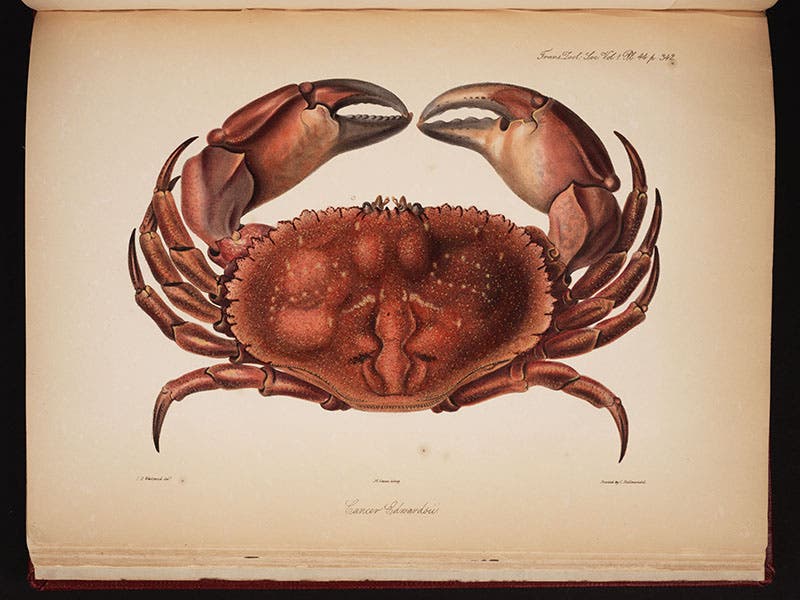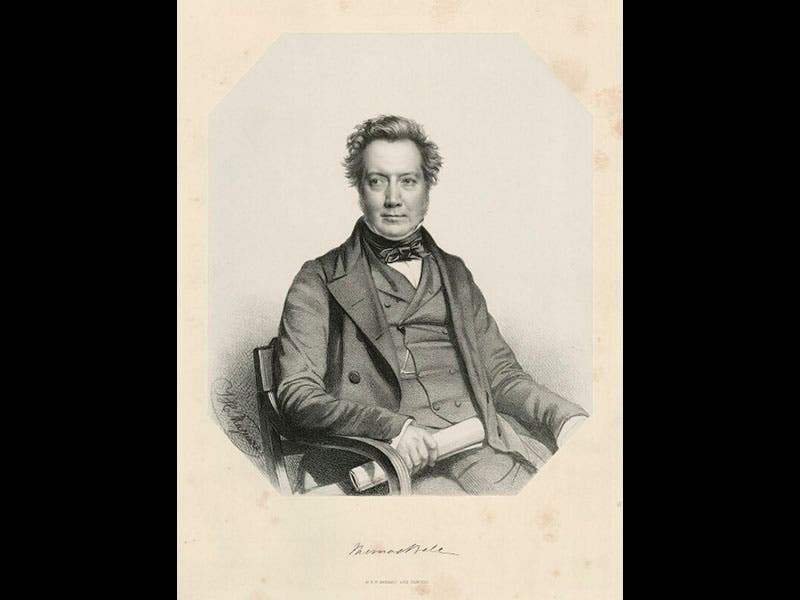Scientist of the Day - Thomas Bell

Linda Hall Library

Linda Hall Library

Linda Hall Library
Thomas Bell, an English zoologist, was born Oct. 11, 1792. In 1832, Bell began issuing in parts his Monograph of the Testudinata, a beautiful work on turtles, illustrated by none other than James de Carle Sowerby and Edward Lear. This is a work we do not have in our collections, so we show above a plate from the copy at the University of Glasgow Libraries (third image). Bell also published a paper on crabs in the first volume of the Transactions of the Zoological Society of London, 1835, with several lovely colored lithographs (first and second images). One or the other of these publications probably brought Bell to the attention of Charles Darwin, who had arrived back home from his Beagle voyage in 1836 and needed someone to describe the iguanas, Galapagos tortoises, and other assorted reptiles that he had collected and sent back to England. Just as John Gould agreed to describe Darwin's birds, Bell agreed to do the reptiles, and he was assigned one volume of Darwin's five-volume Zoology of the Voyage of the Beagle. He also was willing to describe the various crustaceans from the Beagle voyage. Unfortunately, Bell seems to have picked up certain traits from his tortoises, and he was very slow to execute his tasks; the volume on the Beagle reptiles was the last Zoology volume published, appearing in 1843, four years after the initial volume had been printed. We see above an engraving of a Galapagos iguana (fourth image) as it appeared in Bell’s Zoology of the Beagle volume (the artist was Benjamin Waterhouse Hawkins, who would later design and build the famous concrete dinosaurs for the relocated Crystal Palace in Sydenham). Bell never did get around to describing Darwin’s crustaceans, nor did he ever finish his own Testudinata. He was not a man in a hurrry.
In 1844, Bell bought Gilbert White's estate at Selborne, called "The Wakes." In this house, White had written the Natural History of Selborne (1789), the most beloved and widely read of any English work of natural history, Darwin’s included. Bell retired at The Wakes and lived out his remaining years there (he died in 1880). In 1877, when he was 85 years old, he published a new edition of the Natural History of Selborne, adding his own commentary into the mix. The frontispiece (fifth image) is an engraving made from a photograph by Bell of White's home, and Bell points out that the bay window that juts out into the garden was his own addition. We have Bell's edition of Selborne, and the original 1789 edition by White, and a half-dozen other 19th-century editions, issued by a variety of naturalists, in our History of Science Collection.
The portrait of Bell (sixth image) was drawn and lithographed in 1851 by Thomas Maguire, one of a series of over 60 scientific portraits executed by Maguire for the Ipswich Museum.
Dr. William B. Ashworth, Jr., Consultant for the History of Science, Linda Hall Library and Associate Professor, Department of History, University of Missouri-Kansas City. Comments or corrections are welcome; please direct to ashworthw@umkc.edu.









